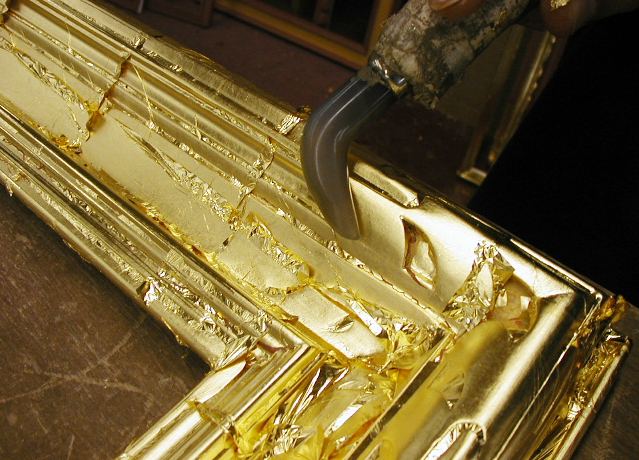|
Portrait Of A Man In A Turban
''Portrait of a Man (Self Portrait?)'' (previously ''Portrait of a Man in a Red Turban'')Acres (2013), p. 7 is the title given to a small oil painting by the Early Netherlandish painter Jan van Eyck, completed in 1433 in Bruges. The inscription at the top of the frame, which is original, reads the first known instnce of his motto ''Als Ich Can'' (intended as the pun "as I/Eyck can", perhaps implying "as only I, van Eyck, can")Hall (2014), p. 43Capron, Emma.A guide to Jan van Eyck's confident self portrait. London: National Gallery, 2016. Retrieved 1 June 2025 was a common autograph for van Eyck but here is the first known usage and unusually is large and prominent. This and the sitter's unusually direct and confrontational gaze have been taken as an indication that the work is a self-portrait. Van Eyck's portrait of his wife in Bruges was probably a pendant to this painting, although her portrait is dated 1439 and larger. It has been proposed that van Eyck created the portra ... [...More Info...] [...Related Items...] OR: [Wikipedia] [Google] [Baidu] |
Jan Van Eyck
Jan van Eyck ( ; ; – 9 July 1441) was a Flemish people, Flemish painter active in Bruges who was one of the early innovators of what became known as Early Netherlandish painting, and one of the most significant representatives of Early Northern Renaissance art. According to Vasari and other art historians including Ernst Gombrich, he invented oil painting, Gombrich, The Story of Art, page 240 though most now regard that claim as an oversimplification. The surviving records indicate that he was born around 1380 or 1390, in Maaseik (then Maaseyck, hence his name), Limburg (Belgium), Limburg, which is located in present-day Belgium. He took employment in The Hague around 1422, when he was already a master painter with workshop assistants, and was employed as painter and ''valet de chambre'' to John III, Duke of Bavaria, John III the Pitiless, ruler of the counties of County of Holland, Holland and County of Hainaut, Hainaut. After John's death in 1425, he was later appointed a ... [...More Info...] [...Related Items...] OR: [Wikipedia] [Google] [Baidu] |
Turban
A turban (from Persian language, Persian دولبند, ''dolband''; via Middle French ''turbant'') is a type of headwear based on cloth winding. Featuring many variations, it is worn as customary headwear by people of various cultures. Communities with prominent turban-wearing traditions can be found in, Punjabis, the Punjabis, the Indian subcontinent, Southeast Asia, the Middle East, the Balkans, the Caucasus, Central Asia, North Africa, West Africa, East Africa, and amongst some Turkic peoples in Russia. A keski is a type of turban Majorly worn by female Sikhs, a long piece of cloth roughly half the length of a traditional "single turban", but not cut and sewn to make a double-width "Double Turban" (or Double Patti). Wearing turbans is common among Sikh men (Dastar), and infrequently women. They are also worn by Hinduism, Hindu monks. The headgear also serves as a religious observance, including among Shia Islam, Shia Muslims, who regard turban-wearing as ''Sunnah mu'akka ... [...More Info...] [...Related Items...] OR: [Wikipedia] [Google] [Baidu] |
Wood Grain
Wood grain is the longitudinal arrangement of wood fibers or the pattern resulting from such an arrangement. It has various derived terms refer to different aspects of the fibers or patterns. Wood grain is important in woodworking and it impacts aesthetics. Definition and meanings Wood grain is the longitudinal arrangement of wood fibers or the pattern resulting from such an arrangement. R. Bruce Hoadley wrote that ''grain'' is a "confusingly versatile term" with numerous different uses, including the direction of the wood cells (e.g., ''straight grain'', ''spiral grain''), surface appearance or figure, growth-ring placement (e.g., ''vertical grain''), plane of the cut (e.g., ''end grain''), rate of growth (e.g., ''narrow grain''), and relative cell size (e.g., ''open grain'').Hoadley, R. Bruce. "Glossary." ''Understanding Wood: A Craftsman's Guide to Wood Technology''. Newtown, Conn.: Taunton, 1980. 265. Print. Physical aspects Grain in growing wood follows the grown fibres o ... [...More Info...] [...Related Items...] OR: [Wikipedia] [Google] [Baidu] |
Molding (decorative)
Moulding (British English), or molding (American English), also coving (in United Kingdom, Australia), is a strip of material with various profiles used to cover transitions between surfaces or for decoration. It is traditionally made from solid milled wood or plaster, but may be of plastic or reformed wood. In classical architecture and sculpture, the moulding is often carved in marble or other stones. In historic architecture, and some expensive modern buildings, it may be formed in place with plaster. A "plain" moulding has right-angled upper and lower edges. A "sprung" moulding has upper and lower edges that bevel towards its rear, allowing mounting between two non-parallel planes (such as a wall and a ceiling), with an open space behind. Mouldings may be decorated with paterae as long, uninterrupted elements may be boring for eyes. Types Decorative mouldings have been made of wood, stone and cement. Recently mouldings have been made of extruded polyvinyl chl ... [...More Info...] [...Related Items...] OR: [Wikipedia] [Google] [Baidu] |
Gilding
Gilding is a decorative technique for applying a very thin coating of gold over solid surfaces such as metal (most common), wood, porcelain, or stone. A gilded object is also described as "gilt". Where metal is gilded, the metal below was traditionally silver in the West, to make silver-gilt (or ''vermeil'') objects, but gilt-bronze is commonly used in China, and also called ormolu if it is Western. Methods of gilding include hand application and gluing, typically of gold leaf, chemical gilding, and electroplating, the last also called gold plating. Parcel-gilt (partial gilt) objects are only gilded over part of their surfaces. This may mean that all of the inside, and none of the outside, of a chalice or similar vessel is gilded, or that patterns or images are made up by using a combination of gilt and ungilted areas. Gilding gives an object a gold appearance at a fraction of the cost of creating a solid gold object. In addition, a solid gold piece would often be too soft or to ... [...More Info...] [...Related Items...] OR: [Wikipedia] [Google] [Baidu] |
Gemäldegalerie, Berlin
The (, Painting Gallery) is an art museum in Berlin, Germany, and the museum where the main selection of paintings belonging to the Berlin State Museums (''Staatliche Museen zu Berlin'') is displayed. It was first opened in 1830, and the current building was completed in 1998. It is located in the Kulturforum museum district west of Potsdamer Platz. It holds one of the world's leading collections of European paintings from the 13th to the 18th centuries. Its collection includes masterpieces from such artists as Albrecht Dürer, Lucas Cranach the Elder, Lucas Cranach, Hans Holbein the Younger, Hans Holbein, Rogier van der Weyden, Jan van Eyck, Raphael, Botticelli, Titian, Caravaggio, Peter Paul Rubens, David Teniers the Younger, Rembrandt, Frans Hals, Johannes Vermeer, Thomas Gainsborough, Joshua Reynolds and Antonio Viviani. Collection Unlike most major national European collections (with the exception of the National Gallery, London), the collection is not essentially ... [...More Info...] [...Related Items...] OR: [Wikipedia] [Google] [Baidu] |
Musée Du Louvre
The Louvre ( ), or the Louvre Museum ( ), is a national art museum in Paris, France, and one of the most famous museums in the world. It is located on the Rive Droite, Right Bank of the Seine in the city's 1st arrondissement of Paris, 1st arrondissement (district or ward) and home to some of the most Western canon, canonical works of Art of Europe, Western art, including the ''Mona Lisa,'' ''Venus de Milo,'' and ''Winged Victory''. The museum is housed in the Louvre Palace, originally built in the late 12th to 13th century under Philip II of France, Philip II. Remnants of the Medieval Louvre fortress are visible in the basement of the museum. Due to urban expansion, the fortress eventually lost its defensive function, and in 1546 Francis I of France, Francis I converted it into the primary residence of the French kings. The building was redesigned and extended many times to form the present Louvre Palace. In 1682, Louis XIV chose the Palace of Versailles for his househ ... [...More Info...] [...Related Items...] OR: [Wikipedia] [Google] [Baidu] |
Portrait Of Giovanni Di Nicolao Arnolfini
''Portrait of Giovanni di Nicolao Arnolfini'' (or ''Portrait of a Man in a Red Chaperon'') is a small portrait by Jan van Eyck believed to be the same person as in the famous 1434 Arnolfini Portrait due to the similarities of facial features. Thus, the work is van Eyck's second portrait of Giovanni di Nicolao Arnolfini, a wealthy merchant from Lucca, a city in Tuscany in central Italy, who spent most of his life in Flanders. The painting was long thought a self-portrait; in colourisation, costume and tone, it is very similar to the signed and dated '' Portrait of a Man in a Red Chaperon'' in London, which is generally accepted as a self-portrait. It was only later that the current work was associated with Arnolfini and the double marriage painting. Today, the painting is held by the Berlin Gemäldegalerie (State Museum). Description Arnolfini wears a dark green gown with dark brown fur lining. He wears a red chaperon with cornette tied on top of the head, with the patte h ... [...More Info...] [...Related Items...] OR: [Wikipedia] [Google] [Baidu] |
Madonna Of Chancellor Rolin
The ''Madonna of Chancellor Rolin'' is an oil painting by the Early Netherlandish painter Jan van Eyck, dating from around 1435. It is now in the Musée du Louvre, Paris. It was commissioned by Nicolas Rolin chancellor of the Duchy of Burgundy, then aged about 60, whose votive portrait takes up the left side of the picture, for his parish church, ''Notre-Dame-du-Chastel'' in Autun, where it remained until the church burnt down in 1793. After a period in Autun Cathedral, it was moved to the Louvre in 1805. In 2024, following conservation, the painting was the focus of an exhibition at the Louvre. Description The scene depicts the Virgin Mary crowned by a hovering angel while she presents the infant Jesus to Rolin. It is set within a spacious loggia with a rich decoration of columns and bas-reliefs. In the background is a landscape with a city on a river, probably intended to be Autun in Burgundy, Rolin's hometown. A wide range of well detailed palaces, churches, an island, a ... [...More Info...] [...Related Items...] OR: [Wikipedia] [Google] [Baidu] |
Craig Harbison
Craig S. Harbison (April 19, 1944 – May 17, 2018) was an American art historian specialising in 15th and 16th-century Flemish and Northern Renaissance painting. He was Professor Emeritus of Art History at the University of Massachusetts Amherst. While attending Princeton University in the early 1970s, he studied iconographic analysis under Erwin Panofsky and Wolfgang Stechow. He had previously studied at Oberlin College, Ohio. While Panofsky was a large influence early in Harbison's career, and he described himself as once being "sort of a rebellious Panofsky-ite",Buchholz, Sarah R.A Picture Worth Many Thousand Words. ''Chronicle'', University of Massachusetts, 14 April 2000. Retrieved 15 December 2012. he moved away from pure study of iconography toward placing the paintings in the context of the social history of their time.Craig Harbison ". ... [...More Info...] [...Related Items...] OR: [Wikipedia] [Google] [Baidu] |








